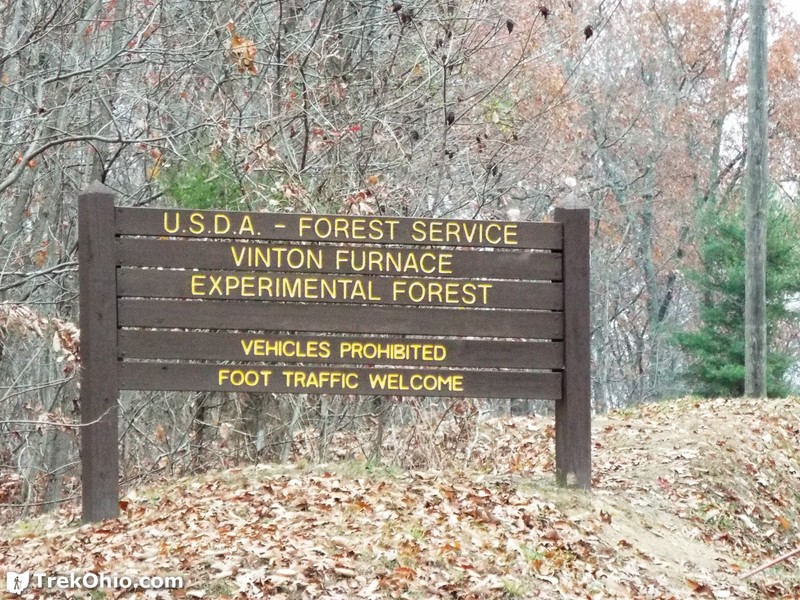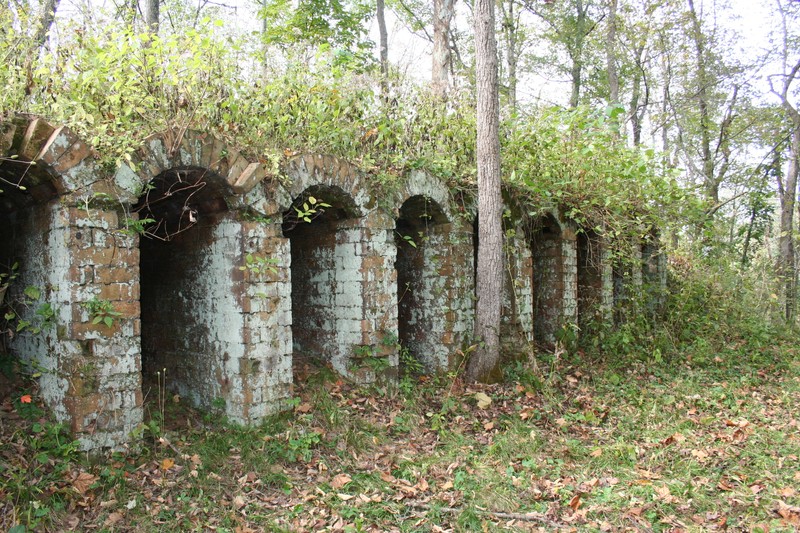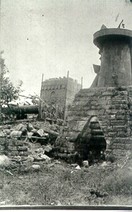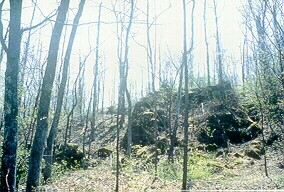Vinton Furnace State Forest
Introduction
Text-to-speech Audio
Images
Vinton Furnace State Forest Entrance Sign

Belgium coke ovens constructed by Rader within the forest

Vinton Furnace after Rader's improvements

Vinton Furnace today

Backstory and Context
Text-to-speech Audio
Perhaps the most interesting aspect of Vinton Furnace State Park from a historic perspective are the ruins of an old iron furnace. According to Ohio's Division of Forestry there are a total of 69 iron furnaces located within this particular part of Appalachia. They were in operation between 1854 and 1883. The original furnaces were used to melt raw iron ore into cast iron. According to Emmett Conway, after the Vinton Iron and Coal company had change hands and received new owners, the new owners hired Charles Innes Rader to help modernize their operation. Rader learned mining and metallurgy while attending college in Freiburg, Germany. It was under Rader that the Belgium coke ovens were constructed. These coke ovens, as seen in the attached images, were used to turn coal into coke; a burning alternative to charcoal. Remnants of the original furnaces and the coke ovens still stand in Vinton Furnace State Park. However, the coke ovens are in much better condition than the original furnaces. According to Conway and Stout, In 1883, thirty years after the original furnace started blasting, its operations ceased and soon after a new coal furnace was built on site. The new furnace was steam-powered and could run with cold or hot blast.
According to the Division of Forestry, Ohio’s population of Oak trees has been in decline over the past number of years. The Oak tree is important for the state for several reasons. Firstly, the Oak is an important member of ecosystems in Ohio. Secondly, a multi-billion-dollar wood industry is reliant on good Oak. Researchers from the site have played a significant role in restoring the Oak tree numbers in the area.
Vinton Furnace State Forest boasts a rich and wide array of wildlife. According to Ohio’s Division of Forestry the area has been subject of scholarly research articles due to it’s rich environment. The site has the largest population of bobcats in the state. Due to the fact that the forest has taken part in numerous ecological experiments, it has a very diverse environment; which has brought a number of wild turkeys.
Sources
“Vinton Furnace State Forest Pamphlet .” Vinton Furnace State Forest , ODNR Division of Forestry , Apr. 2015, forestry.ohiodnr.gov/portals/forestry/pdfs/SF/vintonfurnace.pdf.
Forestry, Ohio DNR Division of. “Ohio.gov / Search.” Ohio DNR Division of Forestry, forestry.ohiodnr.gov/vintonfurnace.
Walker. “Vinton Furnace State Forest - Hocking Hills Forest.” Hocking Hills, www.hockinghills.com/members/Vinton_Furnace_State_Forest.html.
Conway, Emmett A., and Wilbur Stout. “The Olde Forester: Vinton Iron Furnace.” Vinton Iron Furnace, www.oldeforester.com/Vinton.htm.
https://trekohio.com/2016/12/01/vinton-furnace-state-experimental-forest/
https://u.osu.edu/apsley.1/2015/06/20/historic-land-use-offered-at-the-vinton-furnace-state-forest-on-july-10th/
http://www.oldeforester.com/Vinton.htm
http://www.oldeforester.com/Vinton.htm
